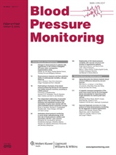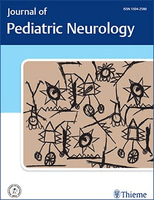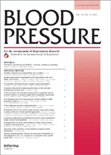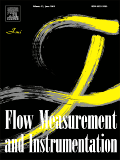
Neurosonology and Cerebral Hemodynamics
metrics 2024
Transforming Understanding of Cerebral Hemodynamics
Introduction
Neurosonology and Cerebral Hemodynamics is a notable academic journal published by the Bulgarian Society of Neurosonology & Cerebral Hemodynamics, dedicated to advancing the field of neurosonology and exploring the dynamics of cerebral blood flow. With an ISSN of 1312-6431, this journal serves as a vital platform for researchers, clinicians, and students interested in the latest methodologies and clinical applications related to ultrasound techniques in neurovascular studies. While the journal does not currently have open access options, it remains a respected source for peer-reviewed articles that contribute to both theoretical insights and practical advancements in neurosonology. The journal aims to disseminate cutting-edge research and foster collaboration among professionals in neurology, radiology, and vascular biology, thereby enhancing the understanding of cerebral hemodynamics in health and disease. As the field continues to evolve, Neurosonology and Cerebral Hemodynamics plays a critical role in shaping future research and clinical practices.
Metrics 2024
 -
- 0.10
0.10 -
- -
-Metrics History
Rank 2024
IF (Web Of Science)
JCI (Web Of Science)
Quartile History
Similar Journals

Journal of Childrens Orthopaedics
Championing Excellence in Child Orthopaedic HealthJournal of Children's Orthopaedics, published by SAGE Publications Inc, is a prestigious open-access journal dedicated to advancing the field of orthopaedics as it pertains to children and adolescents. Since its inception in 2007, this journal has provided a vital platform for researchers, practitioners, and students to share significant findings and innovative practices in pediatrics, perinatology, and child health, maintaining a commendable impact factor as evidenced by its ranking in the Q2 and Q3 quartiles for respective categories in 2023. Based in Germany, it facilitates global dissemination of knowledge with free accessibility since 2014, thus fostering collaboration and enhancement of healthcare practices for the pediatric population. With a focus on the latest advancements and challenges in orthopaedic care for children, this journal is an indispensable resource for professionals seeking to improve treatment outcomes and policy development in this critical health sector.

BLOOD PRESSURE MONITORING
Elevating standards in blood pressure research.BLOOD PRESSURE MONITORING is a distinguished academic journal published by Lippincott Williams & Wilkins, dedicated to advancing the study of blood pressure measurement and management across various medical disciplines. With an ISSN of 1359-5237 and an E-ISSN of 1473-5725, this journal has consistently contributed to the field since its inception in 1996, continuing to provide invaluable insights through 2024. Notably, the journal ranks in the Q2 quartile for Advanced and Specialized Nursing and Assessment and Diagnosis, illustrating its influence in these areas, while also making significant contributions to Cardiology, Internal Medicine, and broader Medical research. Although it does not currently offer open access, BLOOD PRESSURE MONITORING remains essential reading for researchers, healthcare professionals, and students, eager to stay at the forefront of blood pressure research and its critical implications in clinical practice. The journal's commitment to quality and rigor makes it a vital resource for anyone involved in the continuously evolving fields of cardiovascular health and patient monitoring.

EUROPEAN JOURNAL OF PAEDIATRIC NEUROLOGY
Uniting knowledge and innovation in pediatric neurology.European Journal of Paediatric Neurology, published by Elsevier Science Ltd, is a premier academic journal dedicated to advancing the field of paediatric neurology. With its ISSN 1090-3798 and E-ISSN 1532-2130, this journal serves as a vital resource for researchers, clinicians, and students alike, focusing on the latest findings and innovative treatments in paediatric neurological disorders. The journal has established itself as a leading publication in its field, achieving a Q1 classification in Pediatrics, Perinatology and Child Health, and holding a reputable Q2 status in Clinical Neurology as of 2023. Positioned within the top 88th percentile in Pediatrics and the 76th percentile in Clinical Neurology according to Scopus ranks, it publishes rigorous peer-reviewed articles that contribute significantly to clinical practice and research. Although not open access, the journal provides vital insights into the complexities of neurological conditions affecting the pediatric population, making it an essential tool for scholars and professionals striving to improve child health outcomes. With a publication trajectory spanning from 1997 to 2024, it continues to be at the forefront of paediatric neurological research, inspiring innovation and collaboration in the scientific community.

Journal of Pediatric Neurology
Navigating the complexities of childhood neurological disorders.Journal of Pediatric Neurology, published by GEORG THIEME VERLAG KG, stands as a dedicated resource in the field of pediatric neurology, navigating the complex interplay of neurological and developmental disorders affecting children. With its ISSN 1304-2580 and E-ISSN 1875-9041, this journal has been a pivotal platform for advancing research since its inception in 2003, and continues to present critical findings and discussions up to 2024. Although currently categorized in the Q4 quartile for both Neurology (Clinical) and Pediatrics, Perinatology and Child Health within Scopus rankings, the journal's commitment to fostering scholarly dialogue is essential for researchers, clinicians, and students dealing with pediatric patients. Its structured coverage of various neurological disorders, treatment strategies, and innovative therapies contributes to the broader understanding of pediatric neurology, despite the challenges noted in its ranking percentile. By encouraging submissions from diverse disciplines, the journal aims to enhance clinical practice and bridge gaps in knowledge, ensuring a multidisciplinary approach to child health and development.

BIORHEOLOGY
Unraveling the Mechanics of LifeBIORHEOLOGY is a peer-reviewed journal published by IOS PRESS, dedicated to the interdisciplinary field of biorheology, which studies the flow properties of biological fluids and the mechanical behavior of biological tissues. With its ISSN 0006-355X and e-ISSN 1878-5034, this journal has been a vital source of scientific knowledge since its inception in 1965, with coverage extending to recent years and into 2024. As a respected publication within the realms of physiology and biochemistry, it is classified in Q4 in both Physiology and Medical Physiology categories as of 2023, showcasing its niche position within the academic community. The journal primarily aims to disseminate research findings that advance our understanding of biorheological principles and their applications in medicine and biology. Although not listed as open access, BIORHEOLOGY provides essential insights to researchers, professionals, and students eager to explore the complexities of fluid mechanics in biological systems, making it a valuable resource for fostering innovation and collaboration across scientific disciplines.

Blood and Lymphatic Cancer-Targets and Therapy
Uncovering Innovative Therapies for Cancer CareBlood and Lymphatic Cancer-Targets and Therapy, published by DOVE MEDICAL PRESS LTD, is a vital open-access journal that has been disseminating crucial research and findings in the field of hematology and oncology since 2011. With its ISSN 1179-9889, this journal focuses on the latest therapeutic targets and innovative treatment strategies for blood and lymphatic cancers, contributing significantly to the advancement of knowledge and practice in this specialized area. Designed for researchers, healthcare professionals, and students alike, Blood and Lymphatic Cancer-Targets and Therapy aims to foster a deeper understanding of cancer biology and promote collaborative efforts leading to novel therapeutic interventions. The open-access model ensures that research findings are readily accessible to a global audience, underscoring the journal's commitment to enhancing patient care and fostering educational growth in the cancer domain.

PEDIATRIC NEUROLOGY
Empowering Healthcare through Cutting-edge Neurological StudiesPediatric Neurology, a prestigious journal published by Elsevier Science Inc, is a leading resource in the field of child neurology and developmental neurosciences. With an impressive impact factor and categorization in the Q1 and Q2 quartiles across several relevant fields, including Pediatrics, Neurology, and Developmental Neuroscience, this journal is essential for researchers and healthcare professionals focused on pediatric neurological disorders. Since its inception in 1985, it has provided a platform for high-quality research, clinical studies, and reviews that drive advancements in diagnosis, treatment, and understanding of neurological conditions in children. Although the journal does not currently offer open access, it maintains a robust reputation in the academic community, bolstered by its prominent ranking in Scopus metrics. By engaging with the latest findings published in Pediatric Neurology, readers will gain vital insights that contribute to improving pediatric healthcare outcomes in neurology and neuroscience.

JOURNAL OF CEREBRAL BLOOD FLOW AND METABOLISM
Illuminating the pathways of cerebral metabolism.JOURNAL OF CEREBRAL BLOOD FLOW AND METABOLISM, published by SAGE PUBLICATIONS INC, stands as a premier resource in the fields of Cardiology and Neurology, with a remarkable impact on our understanding of cerebral physiology since its inception in 1981. This esteemed journal, boasting a Q1 ranking in multiple categories, including Cardiology and Neurology, offers cutting-edge research articles that delve into the intricacies of cerebral blood flow and metabolic processes, essential for advancing both theoretical and clinical applications. With its significant placement in the Scopus rankings—12th in Neuroscience and 24th in Cardiovascular Medicine—this journal is pivotal for professionals, researchers, and students dedicated to the forefront of medical science. Although open access options are not currently available, the journal remains committed to disseminating high-quality research that addresses the challenges faced in cerebral health, ultimately guiding clinical practice and policy formulation. With an anticipated convergence extending through 2024, the JOURNAL OF CEREBRAL BLOOD FLOW AND METABOLISM continues to be an indispensable asset within the scientific community.

BLOOD PRESSURE
Advancing cardiovascular health through innovative research.BLOOD PRESSURE is a distinguished journal published by Taylor & Francis Ltd in the field of cardiology and internal medicine, with an ISSN of 0803-7051 and E-ISSN of 1651-1999. Since its inception in 1992, it has become a vital source of research and clinical information, dedicated to advancing our understanding of blood pressure-related health issues. With a notable categorization of Q3 in Cardiology and Cardiovascular Medicine and Q2 in Internal Medicine as of 2023, this journal exemplifies a commitment to evidence-based findings that impact clinical practice and patient care. The journal facilitates a platform for original research, reviews, and case studies, aiming to bridge the gap between researchers and practitioners. Although it does not currently offer open access, BLOOD PRESSURE remains an essential resource for professionals and students alike, striving to enhance health outcomes through dedication to innovative cardiovascular research.

FLOW MEASUREMENT AND INSTRUMENTATION
Transforming Data into Actionable KnowledgeFLOW MEASUREMENT AND INSTRUMENTATION, published by Elsevier Science Ltd, serves as a vital resource for researchers and professionals in the fields of Instrumentation, Electrical and Electronic Engineering, Computer Science Applications, and Modeling and Simulation. With an impressive trajectory since its inception in 1989 and extending to 2024, this journal has gained a notable reputation, ranking in the upper quartiles of various categories within the 2023 Scopus metrics, reflecting its significant contribution to advancing knowledge in flow measurement technologies and methodologies. Although it does not offer Open Access options, the journal is well-regarded for its rigorous peer-review process, ensuring high-quality, impactful research dissemination. The journal's emphasis on empirical studies and innovative instrument design establishes it as an essential platform for disseminating cutting-edge findings that facilitate practical applications and inform future research directions. Positioned within the United Kingdom, it attracts a global readership dedicated to the continuous enhancement of measurement sciences and engineering innovations.